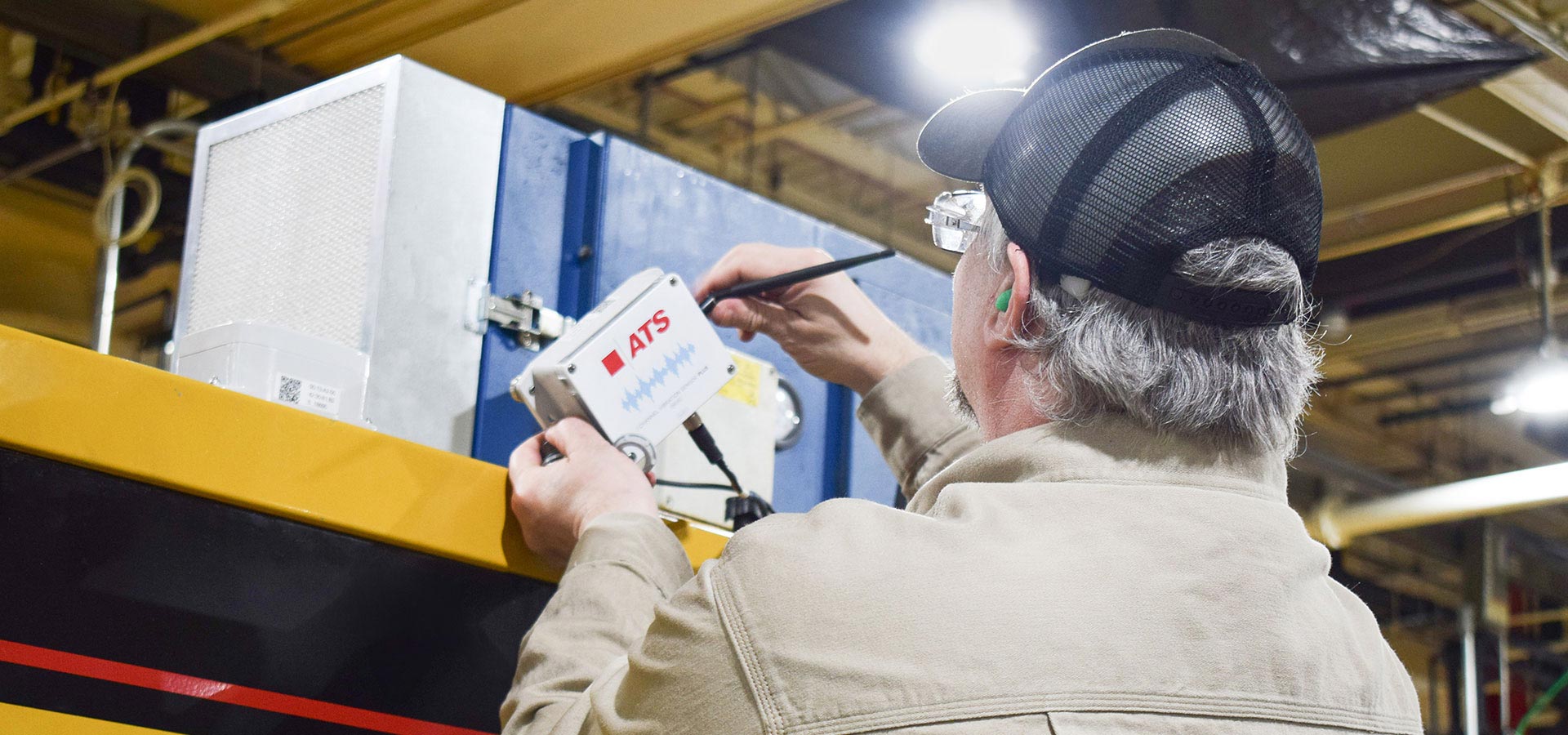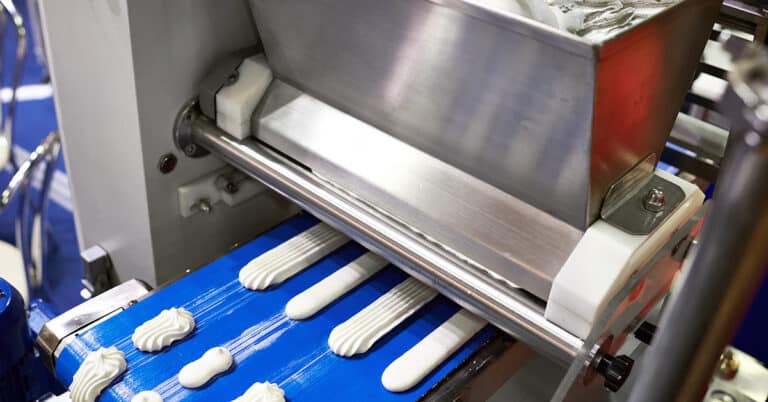The deployment of sensors across the manufacturing industry continues to see significant growth — fueled by an increased awareness of what they can do, combined with an ever-more accessible price point.
Sensors used in the manufacturing industry monitor the performance of various processes and aspects of machine operation, collecting data to determine normal baseline levels of operation while also detecting even the most minuscule fluctuations in that performance. This data can then enable predictive maintenance — a more effective and efficient way to avoid downtime and keep equipment operational. The final piece of the sensor puzzle is real-time communication and connectivity, utilizing today’s high-speed networking capabilities, such as 4G (and soon, 5G) to help ensure data is being monitored and acted upon in real-time. In this piece, we will look at common types of sensors in manufacturing and the functions they serve.
Types of industrial sensors
There are numerous types of manufacturing sensors and process controls, each designed to monitor and collect data about different processes, vectors and equipment performance metrics. Each of the types of sensors used in industrial automation serves a purpose. Not all sensors will be required for all applications — the implementation should be determined by the equipment in use as well as the objectives of the predictive maintenance strategy. These sensor types include the following:
Vibration sensors
Tri-axial accelerometer sensors monitor vibration on rotating equipment and take measurements including velocity, acceleration and displacement. This data is useful to track the consistency of peaks and valleys in equipment vibration. If vibration occurs in a predictable way, it can be assumed that the equipment is operating as expected. If there are fluctuations or deviations from a consistent vibration readout, it will almost always mean that the equipment is not operating as intended and that further investigation (and maintenance) is warranted.
Because so many pieces of manufacturing equipment, across all industries, use rotating parts, vibration sensors are among the most common — and useful — types of sensors to enable reliable, effective predictive maintenance. These sensors — and the personnel who interpret and act upon the data they collect as part of a vibration analysis program — are equipped to identify even the slightest vibration fluctuation, so that maintenance can be scheduled well before a catastrophic equipment failure or shutdown occurs.
Temperature sensors
Industrial temperature sensors are one of the most reliable indicators of the healthy performance of a piece of equipment, and temperature sensors can provide timely and accurate insight into these conditions. In general, a piece of equipment can be expected to operate at a consistent temperature, with cooling elements (such as coolant, airflow or water) in place, if necessary, to facilitate adherence to consistency. Thus, unexpected and uncontrolled temperature fluctuations or spikes are likely to mean that something is not operating at peak performance in a piece of equipment.
Here are just a few of the possible reasons:
- Equipment wear, causing the equipment to require more power to achieve the same result
- Loose or damaged components, leading to increased friction or inefficient operation
- A failure of the cooling system, which can lead to dangerous overheating, equipment damage and production interruptions
Current sensors
One of the most common uses of sensors to control manufacturing processes is to monitor the flow of power to electric motors, and to detect spikes in current that can mean that equipment is not operating as expected. Current sensors are especially useful to prevent excessive damage to equipment due to power spikes, which can reduce costs by enabling automatic shutdown. By powering equipment down and allowing technicians to troubleshoot and repair instead of constantly replacing motors and other components, current sensors can provide a return on investment many times over.
Pressure sensors
Pressure sensors are counted among the most common sensors used in manufacturing and maintenance. Pressure sensor equipment uses a pressure-sensitive element to output a signal, which can then detect flow pressure that is higher or lower than normal and trigger an alarm for defined events or scenarios. These types of sensors are suitable for liquid or gas conduits and can alert personnel to the need for scheduled or unscheduled maintenance. Pressure abnormalities — whether higher or lower than expected levels — can indicate component wear and tear, system malfunction and other conditions that require attention before they lead to unplanned downtime.
Humidity sensors
Air quality sensors are used to measure a number of conditions in the ambient environment, including temperature, airflow and the presence of potential contaminants. Humidity sensors operate in a similar fashion to other industrial sensors and controls and are well-suited to operate in conjunction with other sensors to provide a holistic picture of air quality and ambient conditions around machinery. These sensors for manufacturing can indicate:
- Potential maintenance scenarios due to higher operating temperatures, which can be caused by excessive equipment friction
- Health and safety risks if gas or other contaminants are leaking out of equipment
- Abnormal operation if air pressure readings are outside of normal levels, especially around intakes and exhaust areas
With early detection of these scenarios, maintenance personnel can troubleshoot and remedy problems before they can shut down or damage equipment.
Environmental sensors
One of the many different types of sensors used in manufacturing facilities are those that monitor environmental conditions. These test for air quality, pH levels in water, humidity, temperature and other factors that can have an impact on the performance and lifespan of equipment. When the conditions inside the facility fall out of specific prescribed ranges, operators can be alerted. This not only helps prevent damage to machinery, but also can improve worker safety by detecting potential health risks. These qualities make environmental sensors some of the most important sensors for manufacturing.
Motor sensors
Motor condition monitoring is critical for ensuring factories get the highest levels of performance and dependability from equipment. This is what makes motor sensors so important. By keeping a close eye on pumps, generators, gearboxes and other machinery that depends on motors, manufacturers can schedule preventive maintenance to prevent costly downtime. These types of sensors also detect tiny fluctuations in performance, which gives facilities the opportunity to fine-tune their machinery to provide consistent product quality and extend its lifespan.
Torque sensors
Understanding the effect rotational forces have on the health of equipment is essential, and this makes torque sensors for manufacturing operations highly valuable. These provide ongoing updates of any changes to torque readings, which could indicate potential wear to vital components. This provides manufacturers with the advance warning they need to repair or replace parts before they have an opportunity to fail and hurt equipment uptime. This can have a significant effect on the overall productivity of any manufacturing facility.
The ATS difference
While each application for sensors offers different benefits, the results of manufacturing sensors and machine health monitoring are the same — a more proactive, accurate and effective approach to maintenance — eliminating unplanned downtime, improving production quality, increasing overall productivity, extending equipment life, and streamlining the entire maintenance practice for the organization.
ATS has the maintenance experience along with the data analytics and reliability expertise to help you take advantage of this technology-driven approach. To learn more and get a demo, contact us today.






